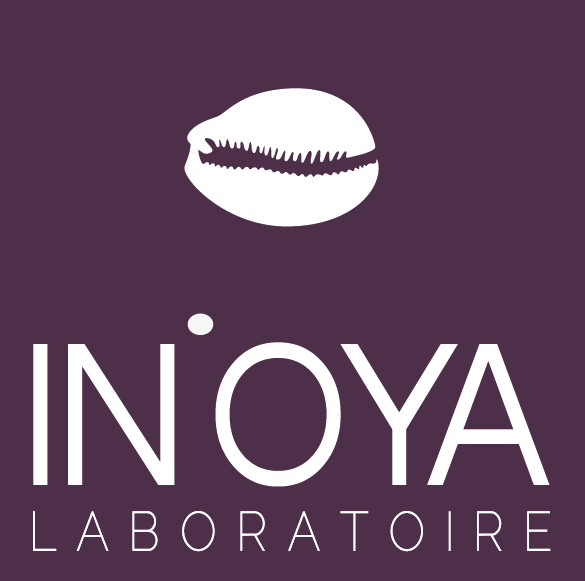Scrubs, Acids, Pimples: What to Avoid on Black Acne-Prone Skin
Black skin acne: what to do? Many Black and mixed-race women find themselves trapped between two issues: fighting pimples and blackheads... while also avoiding the dark spots that remain afterward. On medium to dark skin tones, hormonal acne, adult acne, or inflammatory acne often leave more visible and persistent pigmented scars. And often, it’s not just the pimples that leave marks, but also our own skincare mistakes: overly harsh scrubs, excessive layering of acids, or forgetting sunscreen.
However, by adapting your skincare routine, it’s possible to reduce excess sebum, minimize enlarged pores, prevent breakouts, and especially avoid post-acne marks. Let’s decode the common mistakes—and the right solutions to adopt for an effective anti-blemish routine for Black skin.
Mistake #1: Using overly harsh facial scrubs
Exfoliation is essential for Black skin… but only when done correctly. Many Black or mixed-race women still use coarse scrubs to "deep clean" their skin. Bad idea.
- Abrasive scrubs cause micro-tears in the skin.
- These tiny traumas trigger inflammation and stimulate melanocytes.
- Result: each irritation can turn into post-inflammatory hyperpigmentation (PIH).
In other words: the more you scrub, the more likely you are to develop stubborn dark spots.
Instead of harsh mechanical exfoliation, opt for gentle chemical exfoliants:
- Salicylic acid (BHA): penetrates sebum, unclogs pores, reduces blackheads and retention acne.
- Glycolic or citric acid (mild AHAs): removes surface dead skin cells, boosts radiance, refines skin texture.
- Niacinamide: regulates sebum, tightens pores, fades post-acne marks.
Look for keywords on your product labels such as salicylic acid, glycolic acid, citric acid, niacinamide.
Mistake #2: Overusing acids and layering
The opposite extreme is also common: excessive layering. With the rise of social media, many women pile on serums and exfoliants—AHAs, BHAs, retinol, vitamin C... Result: sensitized, irritated skin that reacts even more.
On acne-prone Black skin, this mistake is especially risky:
- Irritation → inflammation → melanocyte stimulation → new dark spots.
- Weakened skin barrier → sebum rebound → more pimples.
Golden rule: consistency over excess.
One or two well-chosen acids are enough:
- Salicylic acid (BHA) for enlarged pores and blackheads.
- Niacinamide or Zinc PCA to control sebum.
- Azelaic acid (if tolerated) to calm inflammation and lighten spots.
Avoid harsh combinations (e.g., scrub + glycolic acid + retinol in the same routine).
Mistake #3: Popping pimples and skipping sunscreen
Many believe dark skin is naturally protected by melanin. That’s a myth: UVA rays penetrate deeply and sustain inflammation, worsening post-acne marks. Without daily sunscreen, every blemish can leave a stubborn mark for months.
Another common mistake: touching pimples. Popping a comedone further inflames the area, causes scarring, and especially triggers post-inflammatory hyperpigmentation.
Smart habits:
- Don’t touch your pimples.
- Use a sunscreen suitable for oily, acne-prone skin (matte fluid, non-comedogenic).
- Look for effective filters like Diethylamino Hydroxybenzoyl Hexyl Benzoate, Bis-Ethylhexyloxyphenol Methoxyphenyl Triazine, or Ethylhexyl Triazone.
What solutions should you prioritize?
- Gentle cleansing
Use a mild foaming cleanser with ingredients like Decyl Glucoside or Cocamidopropyl Betaine, combined with a low percentage of salicylic acid and Zinc PCA. This purifies the skin without stripping it.
Discover My Purifying Cleansing Foam
- Smart exfoliation
Choose gentle chemical exfoliants, such as a salicylic acid-based gel for oily skin. AHAs (like glycolic or citric acid) can complement, but in small doses and with moderation.
Discover My Exfoliating Cleansing Gel
- Regulate sebum
Rely on sebo-regulating actives:
- Niacinamide: regulates sebum, tightens pores.
- Zinc PCA: gentle antibacterial, anti-inflammatory.
- Enantia Chlorantha + Oleanolic Acid: plant complex known to reduce sebum activity.
Discover My Anti-Blemish Treatment
- Soothe inflammation
Actives like Bisabolol, sunflower oil (rich in linoleic acid), hibiscus, or baobab help soothe skin and reduce redness. - Hydrate without clogging
Choose lightweight, non-comedogenic moisturizers with glycerin or propanediol, enriched with mattifying powders like silica. - Sun protection
A mattifying sunscreen fluid is essential: it prevents hyperpigmentation, protects from UVA/UVB, and helps pimples heal better.
Discover My SPF50 Mattifying Sunscreen
Conclusion
Treating acne on Black skin isn’t about the number of products, but about building a consistent, gentle, and targeted routine. By avoiding common mistakes—harsh scrubs, acid overload, skipping sunscreen—and focusing on the right actives (salicylic acid, niacinamide, zinc, azelaic acid…), you can achieve clearer skin, shrink pores, and prevent post-acne marks.
The key: patience, consistency, and prevention. Because on Black, brown, and mixed skin, the real win isn’t just getting rid of pimples… but preventing them from leaving a trace.

